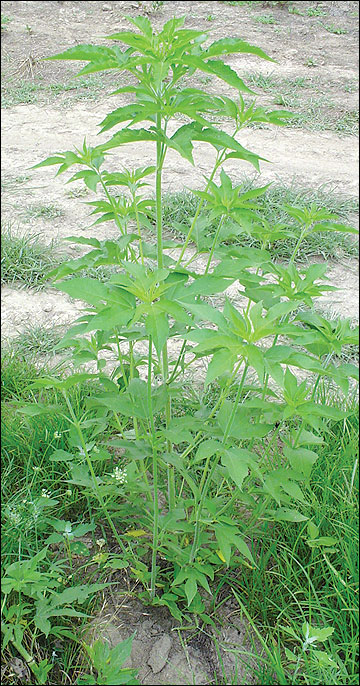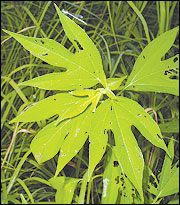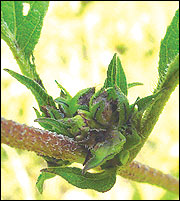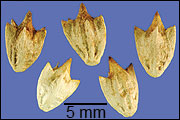Giant ragweed
- Ambrosia trifida
- Horseweed
Forb
The common name for this plant comes from its height. Under ideal growing conditions, plants may exceed 15 feet in height.
Scott Sudkamp, Missouri Department of Conservation
Description
As the name implies, this plant attains a considerable height, often in excess of 7 feet. The species name trifida refers to the leaves, which are three-lobed (sometimes five-lobed). Stems may be 3/4 inch or more in diameter at the plant base. Giant ragweed is common along field edges, roadsides, ditches and bottomlands, and is a prolific seed producer.
Bloom period
July to October
Use by bobwhites
Along with common ragweed, giant ragweed is responsible for innumerable cases of hay fever each summer. But also like common ragweed, giant ragweed is among the most favored foods of bobwhites. At least one researcher has found giant ragweed to contain more metabolizable energy by weight than corn. Giant ragweed often occurs in dense stands along field edges, providing great brood cover and summer thermal refuge.






